The perfect vacation in Yangzhou! Having morning tea and visiting the gardens, everything in Yangzhou is full of elegance
More than 1300 years ago, the poet immortal Li Bai said,"My old friend left the Yellow Crane Tower in the west, and the fireworks fell under Yangzhou in March." It caused the world to rush to Yangzhou in spring.
As everyone knows, Yangzhou's autumn and winter are even more abundant.

Golden ginkgo, fiery red maple leaves, and semi-yellow and semi-green willows, intertwined with red and yellow, are shrouded in historical precipitation, giving Yangzhou, a city immersed in Tang and Song poetry, a different cultural background.
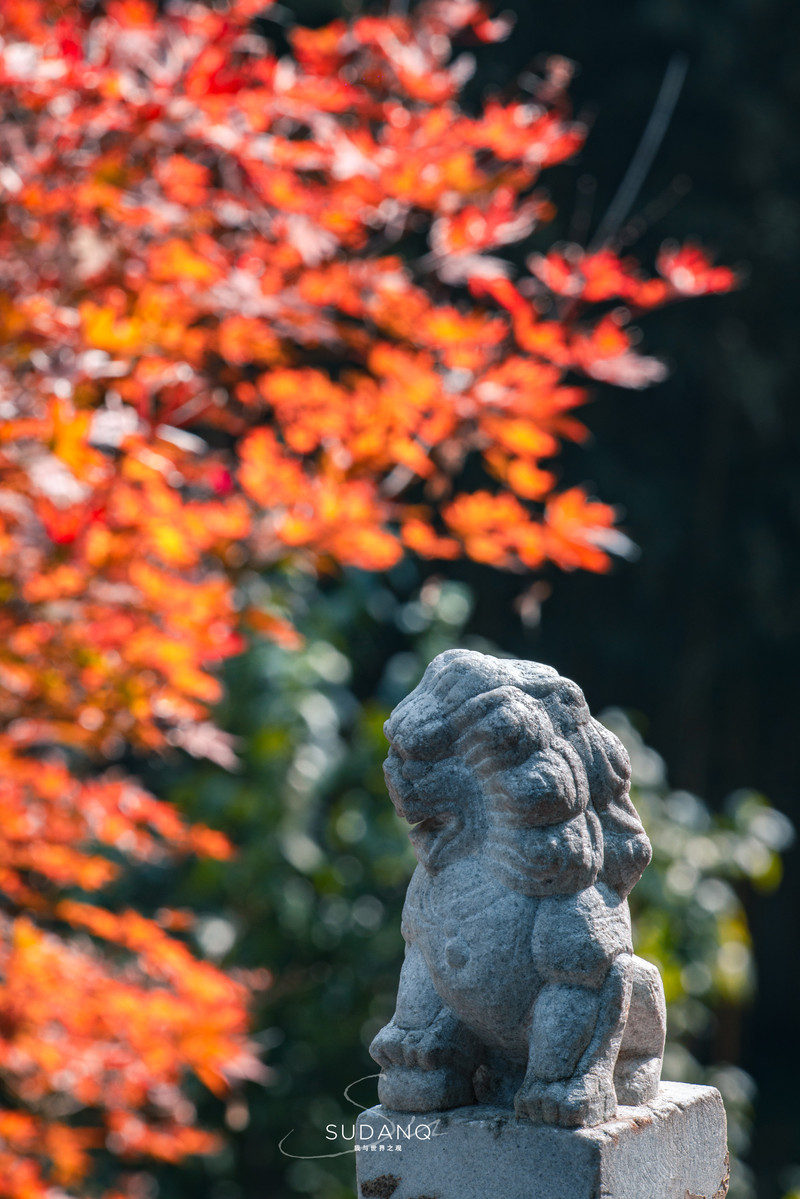
It also makes the early winter in Jiangnan in Yangzhou more gentle. Even after thousands of years, it still maintains an independent spirit!
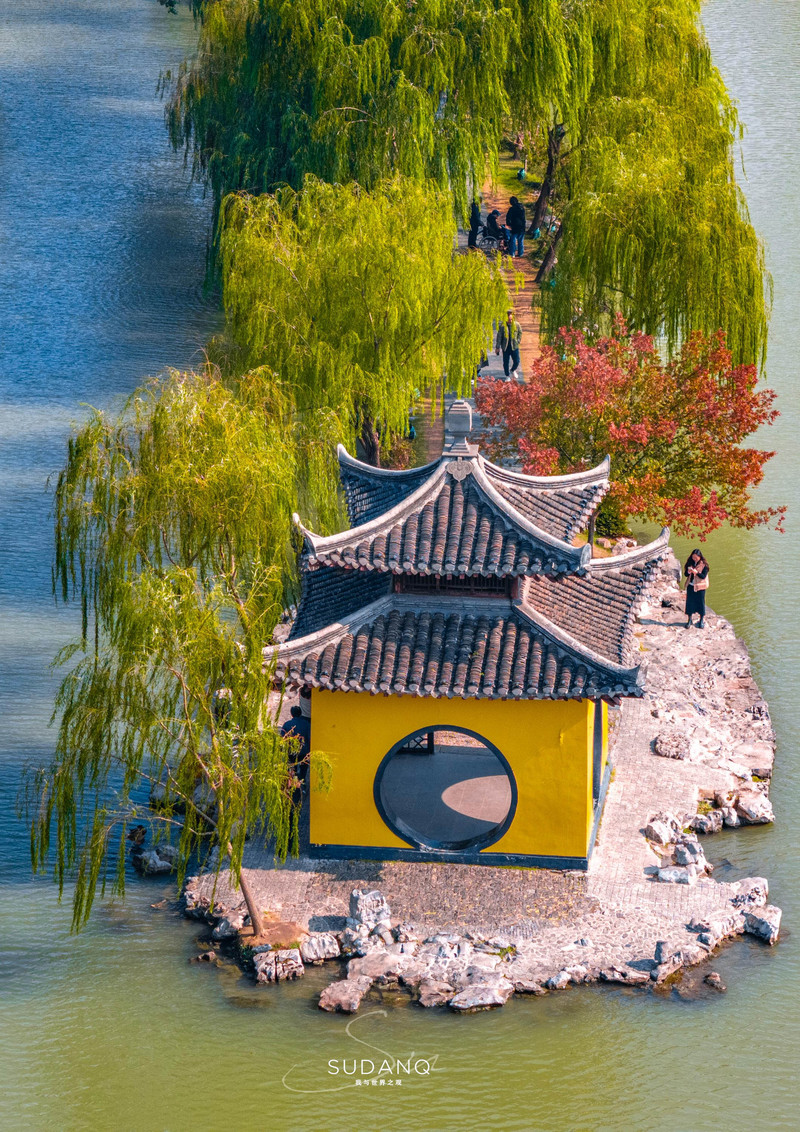
Today's Yangzhou City is becoming more and more elegant with the precipitation of its grand history. Everyone who comes to Yangzhou is not in a hurry to explore the history of the city. People will always eat morning tea, eat Huaiyang cuisine, visit the gardens, and take a bath and rub their backs in ordinary life... These seemingly simple experiences of eating, drinking and having fun are actually touching history.

From the moment I got off the high-speed train from Yangzhou Station, the trip had to be adjusted to a "slow tone". Yangzhou is slow. What is slow is the precipitation of history, what is slow is the accumulation of culture, and what is slow is the attitude towards life. Only by being slow can we understand how much gentle time has given Yangzhou.

Perfect holiday itinerary
Yangzhou Free Travel: Five days and four nights
Accommodation recommendations: Pingshanju (a B & B like a small courtyard in Jiangnan), Yangzhou Heyi Hotel Experience Store
Recommended morning tea: Quyuan, Fuchun, Yechun
Huaiyang cuisine restaurant recommendations: Yangzhou Banquet, Fuchun, Yechun, Wanfeng Hotel, Geyuan Salt Merchants Restaurant, etc.
garden| Recommended ancient temples: Slender West Lake, Geyuan, Heyuan, Daming Temple
Citywalk: Tianning Temple-Shi Kefa Memorial Hall-Wenhui Pavilion
Other attractions: Canal Sanwan Scenic Area, Songjiacheng
Special experience: Yangzhou Back Rubbing Hall
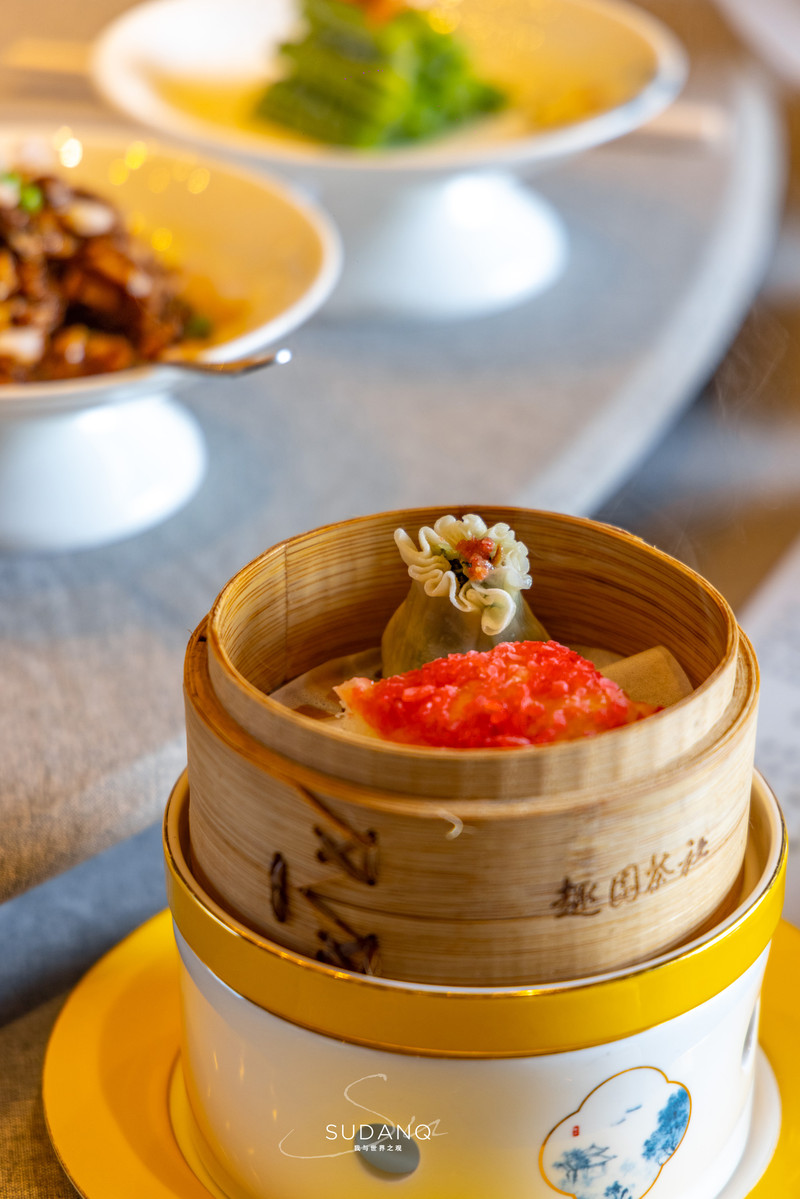
01 Yangzhou is slow, starting from morning tea
In the world of morning tea culture, Yangzhou morning tea also has a strong ink.
"Wrap your skin with water in the morning and wrap it with water at night." These are two great joys in Yangzhou, and it is also a ritual for Yangzhou people to live.
As the "three giants of Yangzhou morning tea", Quyuan, Fuchun and Yechun are places where almost everyone can check in. They are either the classical style of Yangzhou morning tea, the rich style of morning tea culture, or the exquisite selection of authentic customs.

Quyuan: Garden Tea House
The Quyuan on the bank of Slender West Lake is a must-visit tea house every time I visit Yangzhou.
Quyuan, also known as Huangyuan, was originally built by brothers Huang Luxian, a salt merchant in the Qing Dynasty. In the twenty-seventh year of Qianlong (1762), when Emperor Qianlong toured Yangzhou in the south and toured Slender West Lake, he named it "Quyuan".
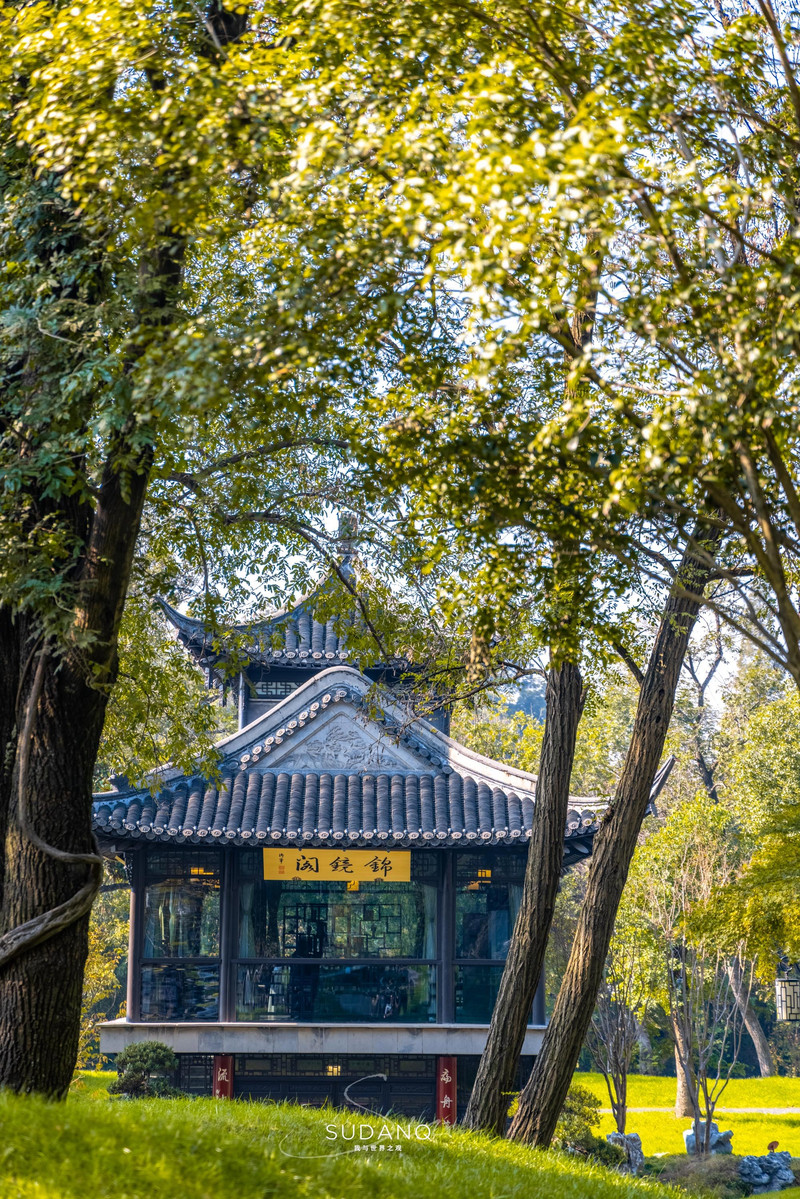
This is a garden-style tea house with two major scenic spots: "Shuiyun Shenggui" and "Four Bridges Yanyu". There are also pavilions and rockery, small bridges and flowing water, and paths leading to the secluded scenery to give full play to the beauty of the garden. Eating morning tea here is a beautiful enjoyment, as if the beauty of all things is concentrated in the fun garden.

The "Duck Prophet" outside the window traveled back and forth from spring to autumn and winter, and the clear songs from somewhere lingered in my ears, making me feel like Yangzhou's slowness in the painting?

It is true that Yangzhou City itself is a painting.
Quyuan Morning Tea is as good as ever, and even has new inspiration. There is a bookmark with an exquisite Yangzhou scenery next to each person's tableware, which makes people fall in love at a glance and move in all directions.




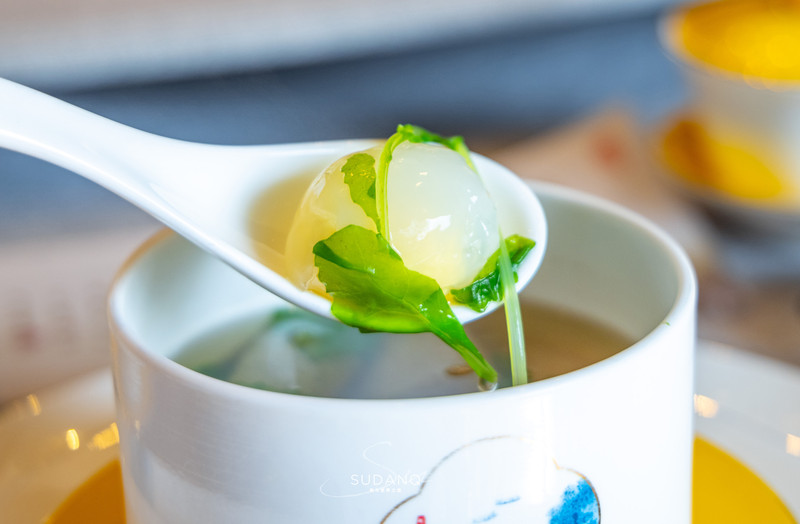

With a cup of green tea in hand, friends around the table in pairs, looking at the swaying red maples outside the window, listening to the melodious birds in the forest, and eating hot dried shredded silk, roasted meat, crab roe soup dumplings, Wuding buns, silver noodles without haste...

Fuchun: Tea tea can be ordered and enjoyed by everyone
When it comes to Yangzhou's old tea house, Fuchun must be on the list, founded in 1885.
Fuchun cuisine is a unique place in Yangzhou City. Ba Jin, Zhu Ziqing, Bing Xin, Lin Sanzhi, Wu Zuoren, Mei Lanfang, Zhao Dan and other masters of literature and art have left calligraphy treasures and praises.

When I had morning tea in Fuchun, I couldn't help but admire: The morning tea here is a cultural feast. Its excitement is not only the detailed scenery and the fragrance of tea, but also the historical precipitation behind it.

The earliest Fuchun was a modern and fashionable dining form that integrated the four beauties of flowers, delicious tea, delicious dishes and fine dishes. It was called the "Fuchun Flower Bureau" at that time.

However, the transformation from "flower bureau" to "tea house" was a historical change of a city and a country (during the Revolution of 1911). It is also a historical opportunity for Fuchun's transformation.

Today's Fuchun Tea House has a history of more than 130 years and was first famous for its tea. Fuchun tea is called "Kuizhongzhu" and is made from Anhui Kuizhen, Zhejiang Longjing and Fuchun Flower Bureau from Zhulan. This tea takes the flavor of Longjing, the color of Kui-needle, and the fragrance of pearl orchids. It is brewed with Yangtze River blisters. It has a rich fragrance and is durable to foam and drink. It is very suitable for pairing pasta.



Fuchun's Sanding Bao, Crab Huang Bao, Da-boiled Dried Shrews, Jade Shaomai, etc. are unique, and every bite exudes a strong Yangzhou city style.

Yechun: The beauty of utensils, the taste of scenery
Having morning tea at Yechun Tea House, to be honest, I really can't bear to eat it.
There is a typical beauty of oriental utensils flowing between the refreshments and exquisite tableware, which makes it difficult to break the calm.

Yechun means cultivating the color of spring. Its predecessor was the famous "Xiangying Gallery" and "Qingsheng Tea House". It has a history of more than 200 years. Eating morning tea here gives you a poetic enjoyment in the soul. Outside the window of Yechun, there are trees, water, bridges, pavilions, and four seasons alternate. This time it is late autumn.

Zhu Ziqing said that Yechun Tea House "also has small ponds, clusters of bamboos, and thatched pavilions, with the most secluded scenery.""The decoration is all in a complete way, and it is not comparable to the square teahouses in Shanghai and Peiping."

Yechun Tea House is a classic-style building with several water-pavilions facing the river. Golden straw is the roof, wooden boards are the walls, and glass are the windows. Between the tea shops, there are winding corridors connected, hidden among the clear streams and green willows, making it quite quiet. Not far from the window is the famous Red Bridge.





Like Quyuan and Fuchun, Yechun Morning Tea has also precipitated the heart of the craftsman. There are no delicious contests between various details, or the careful consideration of craftsmanship and knife craftsmanship. One bite makes life so comfortable and soft.

02 To taste Huaiyang cuisine, you have to be Yangzhou
Not eating from time to time is a manifestation of Yangzhou people's attitude towards life and the essence of Huaiyang cuisine. But Yangzhou people have the ability to not only eat delicately, but also appreciate the seasonal scenery.

"The autumn wind is ringing, and the crab feet are itchy; the chrysanthemums are blooming, and the crabs are fragrant."
In the writings of ancient literati, eating crabs was often inseparable from appreciating chrysanthemums.

Visiting chrysanthemums in Slender West Lake is a major event for Yangzhou people. As one of the most beautiful lakes in China, Slender West Lake has been a tourist attraction since ancient times. It was one of the most famous scenic spots when Qianlong went to Jiangnan. It has been recorded six times in history and is known as "the prosperity of gardens, the best in the world."

In autumn, Slender West Lake is popular among citizens and tourists with its chrysanthemum display. Under the crowded gardens on both sides of the Taiwan Strait, chrysanthemums of various precious qualities bloom brilliantly in autumn, which is pleasing to the eye.
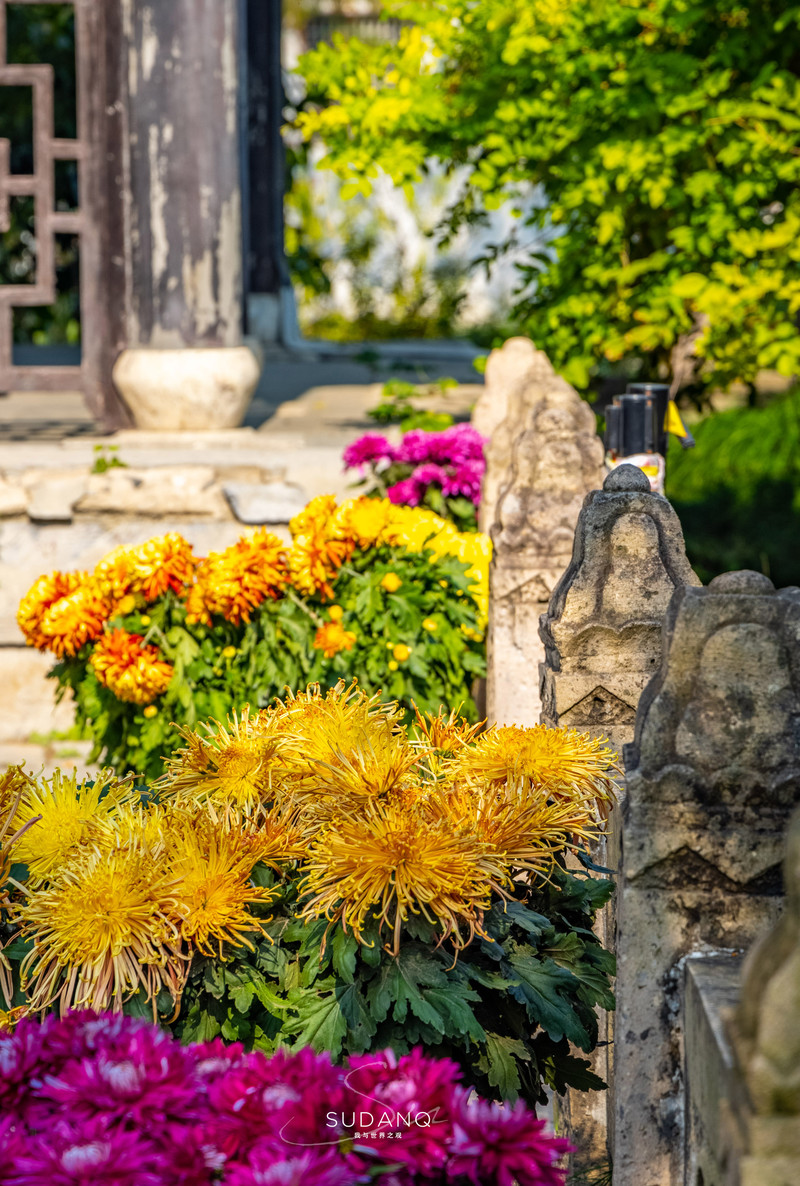
The clever combination between chrysanthemums and ancient buildings reflects the autumn and winter aesthetics of Yangzhou people. The more the chrysanthemums bloom, the more fatter the crabs are.

There are several different ways to make crabs in Huaiyang cuisine, including Maotai-flavored and original flavors, classic crab roe buns, and innovative crab roe lion heads.

In autumn, the main scenery is chestnut, radish, water bamboo, chrysanthemum, etc., which will appear on Yangzhou people's dining tables and are the best among Huaiyang cuisine.

Here, people can take seemingly simple daily meals to the extreme in cutting skills and cooking. Every dish is infused with elegant culture and charm. It's really "the best taste in Southeast Asia and the most beautiful in the world."

Yangzhou Banquet: Wang Zengqi's Family Banquet
It combines the elegance of literati cuisine with the splendor of official cuisine, and is a prominent label of Huaiyang cuisine. Four years ago, the "Yangzhou Banquet" launched the "Wang Zengqi Family Banquet", which transformed the rural dishes of the Lixiahe area described by the famous modern and contemporary writer and gourmand Wang Zengqi into a family banquet after careful selection, refinement, and research.

The food in the four directions in Wang Zengqi's works has always deeply influenced me. The simplest food in the scenery has become palpable and enjoyable in his descriptions. Any ordinary ingredient will become "high-end" as long as it puts in good expectations for life.

Wang Zengqi's rural banquet is divided into four chapters according to the seasons of spring, summer, autumn and winter, which implicitly conforms to the usual dietary concept of "not eating Huaiyang cuisine from time to time".

Under the operation of the Yangzhou chef, the "Wang Zengqi Family Banquets" that were exquisite, detailed, beautiful, clever, elegant and literary appeared one after another. While praising and looking forward to it.

At the turn of autumn and winter, the fatness of the thriving hairy crabs is mouth-watering, with full crab paste and full crab meat.
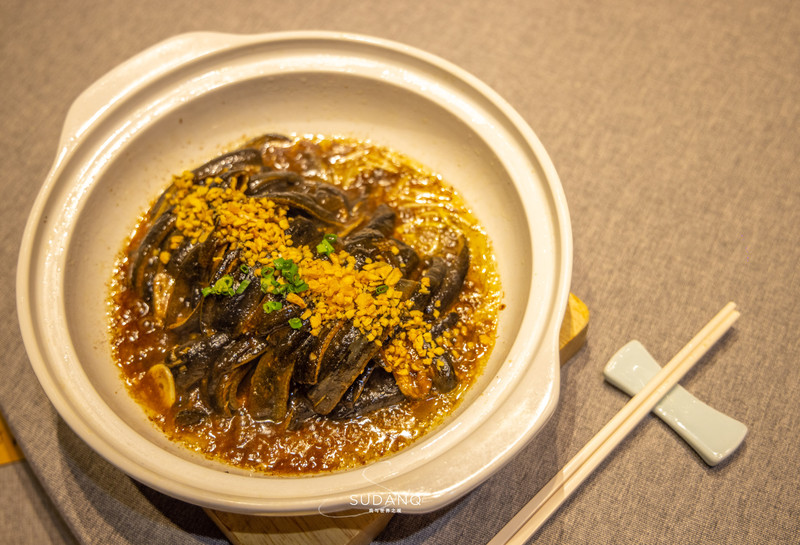
Huaiyang stir-fried soft pockets with leek fragrance, this is the most famous dish among Huaiyang cuisine, and it is known as "soft pockets, long fish and fresh bones".

Beijing onion and eight-treasure gourd duck can be regarded as one of the "treasures of the town" of Yangzhou banquets. Wang Zengqi wrote in the chapter "Scholars Talk about Eating":"My master's wife and third sister Zhang Zhaohe can cook. The glutinous rice eight-treasure duck she makes is crispy and delicious, the skin does not break, and the meat does not fall apart. It is a masterpiece." This dish is one of the kung fu dishes of Huaiyang cuisine.

"The taste of tiger head shark is better than that of puffer fish and shrimp" is Wang Zengqi's poem praising the rural taste of tiger head shark. As soon as the tiger head shark with snow vegetables and white sauce was served, it attracted onlookers.



This "family banquet" also includes brocade cold dishes (eight-course), pickled vegetables and frangipani soup, gorgon fruit hand-peeled river shrimp, braised lion's head in soup and vegetables, handmade dried shredded silk, bacon stewed with local cabbage, spring spring and pastoral fried vegetables, as well as Guangling fine points and Yangzhou fried rice.
After eating, I couldn't help but think of what Wang Zengqi said in his book: "Eating is a family banquet, and after eating, there is a relationship."

Fuchun: Huaiyang Delicious Food First Floor
When Fuchun transformed from a flower bureau to a tea house, it was already a legend in Yangzhou's morning tea industry. But Chen Buyun, founder of Fuchun Tea House, obviously has a bigger move-providing complementary dishes to guests enjoying tea.
This bold move gave birth to Yangzhou's "Huaiyang Delicious First Floor".

We are no strangers to going to Fuchun for morning tea. But going to Fuchun to eat Huaiyang cuisine is unexpected for many outsiders. Fuchun Tea House located on Liangdao Street is an old shop. There are also four typewriters on the wall of the courtyard, which makes people feel trance back to the long history.

When eating Huaiyang cuisine in Fuchun, the first dish must be boiled dried shredded. This dish seems to be spread all over Yangzhou City now, but its roots must be Fuchun.

Mustard duck's feet are the most tightly served dish in Fuchun cold plates.

But my favorite thing is the fermented fermented shrimp. It is beautifully served and has a refreshing taste. With one sip, the shrimp meat will be full into my throat.

Stewed crab meat and lion's head is a seasonal dish in late autumn in Yangzhou, which is also the focus of Fuchun chef.

The red plum blossoms wrapped in snow are hard to bear to destroy. The elegant atmosphere of Jiangnan is really enjoyed. The exquisite production of this dish makes me admire the artistic aesthetics of Yangzhou people.
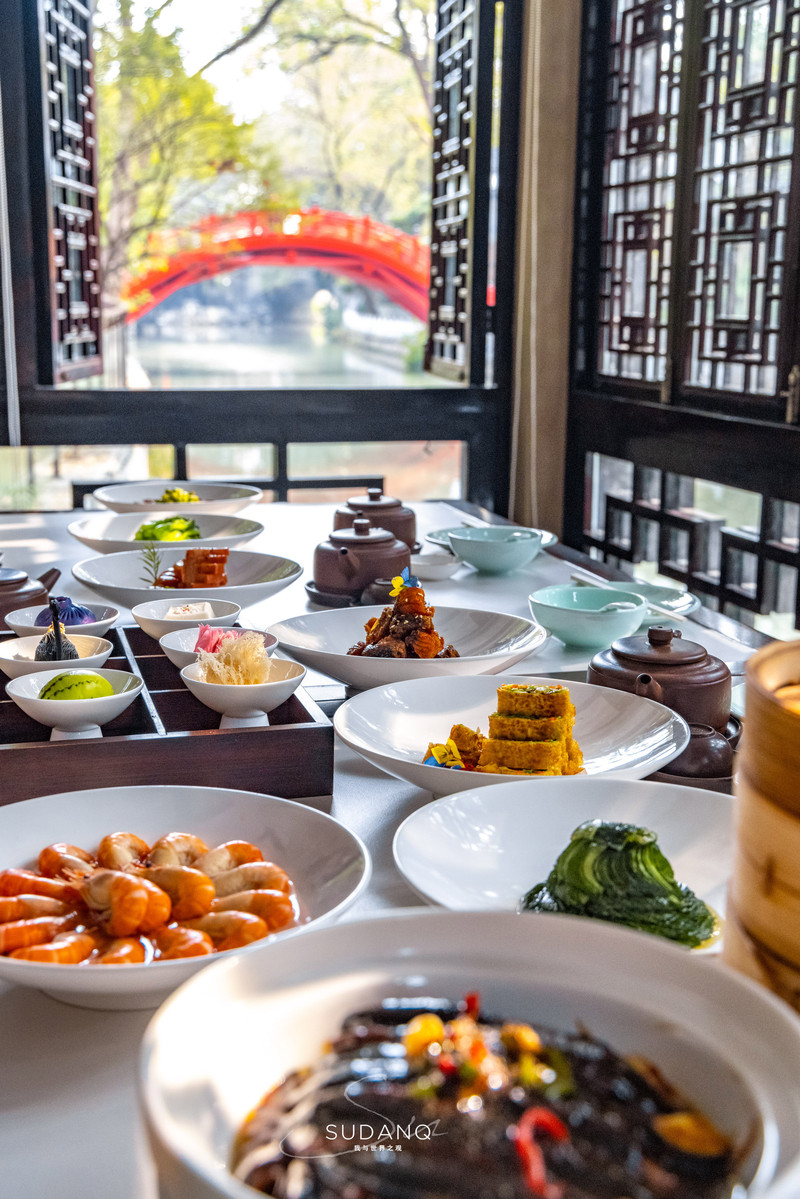
Yechun: The competition between Huaiyang cuisine and Cantonese dim sum
Like Fuchun Tea House, many people know that Yechun is also one of Yangzhou's classic tea houses, but eating Huaiyang cuisine in Yechun is not as "known to all visitors" as the Yangzhou Banquet.

However, what I didn't expect was that I would eat Cantonese snacks in Yechun (Yechun Tea House Royal Pier Store).


This lunch starts with a cage of steamed buns with fresh and sweet soup, including Huaiyang cuisine, classic clear soup of lion's head, boiled dried shredded silk, salty water old duck... Everything can be ordered without error. It is classic and delicious.

Of course, the most outstanding thing this time is the Huaiyang Soft Bag. The late autumn sun shines through the window grilles and reflects on the body. It is really delicious.

But the most unexpected thing was the appearance of Cantonese dim sum. In the heart of a square plate, the most attractive thing is the black swan cake filled with durian, and the most exquisite one is the pink white koi. It looks like it can't bear to eat but wants to eat it more.

Cantonese-style red rice crispy rice noodles cannot be missed. This is a must-have in Cantonese morning tea, and its status is comparable to the Sanding Bao in Yangzhou morning tea.
I won all of this competition of wonderful scenery regardless of one or two.

When eating Huaiyang cuisine in Yangzhou, you basically won't step into the trap. Every restaurant that serves Huaiyang cuisine is unique and innovative.

For example, Wanfeng Hotel's Sauced Rice Cake hairy crabs are unique seasonal dishes in autumn and winter. The braised little puffer fish from Geyuan Salt Shang Restaurant is endless to the tip of your tongue.

03 Yangzhou Gardens: The Outstanding Garden in Jiangnan Gardens
Yangzhou's gardens have always been famous."Yangzhou Painted Boat Record" states that "Hangzhou wins with lakes and mountains, Suzhou wins with cities, and Yangzhou wins with gardens and pavilions. The three stand tall and strong, without distinction." It can be seen that during the Jiaqing period of Qianlong, Yangzhou gardens dominated the world.

The richest salt merchants eat this industry, pursue precision, and are also exquisite in garden construction. At that time, there were more than 200 private gardens in Yangzhou City at their peak. Nowadays, the gardens of Geyuan, Heyuan and Slender West Lake are the most famous.

Geyuan: One of the four famous parks in China
As "one of the four famous gardens in China", Geyuan is a private garden of Yangzhou salt merchants 'residences in the Qing Dynasty.

During the Jiaqing period of the Qing Dynasty, it was expanded by Huang Zhiyun, the chief salt merchant of Lianghuai River, on the former site of Shouzhi Garden in the Ming Dynasty. It covers an area of 23000 square meters and is the largest and most completely preserved salt merchant residential garden in Yangzhou today.

Geyuan is famous for planting green bamboos all over, and is famous for its rockery in spring, summer, autumn and winter. In mid-November, Yangzhou must have it among the recommended destinations for a good place to enjoy autumn.

On a warm afternoon, it was very pleasant to walk around in the garden, and the artistic aesthetics of the Qing Dynasty salt merchants came into view. Rockeries, lakes, stacked rocks, red maples, water pavilions, ancient pavilions... this private garden of the Qing Dynasty is really quite beautiful. The beauty of its gardens is worthy of being one of the "Four Famous Gardens in China".

Although the biggest feature of the Geyuan is the concept and construction of "Four Seasons Rockery." In the garden covering an area of less than 50 acres, four lifelike rockery areas have been opened up, named spring, summer, autumn and winter respectively. It is an isolated example of Chinese gardens.

But to truly enjoy autumn, the Zhuqiu Pavilion on the south peak of Qiushan Mountain is a good place to go. The building faces east and west, is built against the walls, with windows on three sides. It is the largest building on the rockery in the whole garden. Looking at and sighing autumn here, you can really feel the high aesthetic level of the garden owner at that time.

He Garden: The First Garden in the Late Qing Dynasty
He Garden is also known as the "Jixiao Mountain Villa", which is taken from Tao Yuanming's return."Stay by the south window to express pride, climb Donggao to relax the roar."

In the ninth year of the Guangxu reign of the Qing Dynasty (1883), He Zhizhen resigned from his official position at Huangde Road in the Han Dynasty in Hubei Province and the supervisor of Jianghan Pass. He purchased the former site of Wu Pianshishan House, which was later expanded into a garden. It took 13 years.

He Garden is not only exquisite, beautiful, classical and elegant, but also combines Chinese and Western. Many celebrities have lived here in history. It is a representative work of Yangzhou gardens in the late Qing Dynasty.

The overall building mainly consists of four parts: East Garden, West Garden, Garden Residential Courtyard, and Pishishan Mountain House.
The main architectural feature of He Garden is that it gives full play to the function and charm of corridor buildings. The 1500-meter complex corridor is a rare sight in Chinese gardens.

Diverting left and right, hooking up high and low, surrounding mountains and rivers, and climbing into the room, forming an all-round three-dimensional landscape and all-weather sightseeing space. It gives full play to the beauty of Chinese garden art and the beauty of extending in all directions. It is the earliest prototype of an overpass in China.

When walking along the corridor, the flowered windows that come into view show the beauty of ancient Chinese buildings. It is illusory and solid, leaking but endless, and tempting to explore. At a glance, you can see windows, paintings, scenes, and the infinite alternation of the four seasons.

Daming Temple: A thousand-year-old temple where you can visit the gardens
Visiting Daming Temple is like visiting a garden.
Yangzhou at the turn of autumn and winter is completely different from the "Fireworks March". It is caught off guard, and the classical atmosphere it exudes is a profound sense of historical precipitation.

Daming Temple is named after it was first built during the Ming Dynasty of Emperor Xiaowu of the Song Dynasty in the Southern Dynasties (457-464). It was built and demolished several times, and the existing building was rebuilt during the Tongzhi period of the Qing Dynasty. The main buildings include archway, Tianwang Hall, Daxiong Hall, Qiling Tower, Jianzhen Memorial Hall, Pingshan Hall, Ouyang Temple, etc. There are also garden landscapes such as Xiyuan. It is a thousand-year-old temple where you can visit the gardens.

The long river is long, and the urban scenery covered by layers of forest is particularly lively in Daming Temple. With yellow and green, red and yellow intertwined, Daming Temple, which lasted for more than 1500 years, is like a painting.

When I walked into Daming Temple in autumn and winter, I couldn't help but admire that it was really a "hidden resort" deep in the city.

Although it has long been famous, it still exudes a sense of tranquility and alienation. The white walls warm the sun, and it is quiet and peaceful. I couldn't help but restrain my temper, filled with the calmness and indifference of autumn, and relaxed completely. Walking through this, I can finally appreciate the beauty of the sentence "stealing a life and leisure for half a day".

04 Citywalk: Tianning Temple-Shi Kefa Memorial Hall-Wenhui Pavilion
Yangzhou Autumn and Winter Citywalk, stroll through the ancient city of Yangzhou, these three places are worth exploring: Tianning Temple, Shikefa Memorial Hall, Wenhui Pavilion.
Small historical sites, the whole journey is on foot, and there are thousands of years in every inch. It has a century-old legacy. There are two scenic spots for enjoying ginkgo.

|tianning temple
Legend has it that it was built in the Eastern Jin Dynasty as Xie 'an Villa. Later, his son Sikong Xie Yan asked for the house to be built into a temple, named Xie Sikong Temple. The first year of Zhengsheng in the Wu Zhou Dynasty (695) was changed to Zhengsheng Temple, and it was named "Tianning Temple" during the Zhenghe Period of the Northern Song Dynasty. It was rebuilt in the Hongwu year of the Ming Dynasty and was repeatedly repaired during the Zhengtong, Tianshun, Chenghua and Jiajing periods.

In the Qing Dynasty, it was ranked first among the eight ancient temples in Yangzhou. Emperor Kangxi once stayed here during his southern tour. Before Emperor Qianlong's second southern tour, a palace, an imperial garden and an imperial dock were built on the west of the temple. In the imperial garden, an imperial book building-Wenhui Pavilion was built.

Today's Tianning Temple is not used as a religious site. It has an antique area and several ginkgo trees. Check-in autumn is worth a visit here.
Tickets: 0 yuan
Tour time: approximately 60 minutes

|Shi Kefa Memorial Hall
This is a famous historical relic commemorating Shi Kefa, the national hero who resisted the Qing Dynasty in the late Ming Dynasty. Sitting in the banquet hall is a statue of Shi Gong. He is calm and thoughtful, making people seem to see a generation of loyal ministers who "walk without opening the cover, eat without heavy taste, fan in summer, coat in winter, and wear clothes in bed."

The two ginkgo trees in front of the banquet hall are thick, straight, and shaded. They have a history of more than 200 years and are one of the best places to enjoy autumn in Yangzhou.

Although the Shi Kefa Memorial Hall is relatively small, the things that can be visited in the park are much more exquisite. The plants alone are amazing. There are green willows, green bamboos, pine trees, cold plum trees, peonies, ginkgo trees, etc. The overall situation is quiet and solemn, elegant and tranquil.
Tickets: 0 yuan
Tour time: approximately 2 hours

|Wenhuige
Wenhui Pavilion was an imperial book building built by Qianlong during his southern tour of Jiangnan and building a palace in Yangzhou.
But in the torrent of history, Wenhui Pavilion no longer exists. In 1854, Wenhui Pavilion was destroyed in the war, along with the precious "Siku Quan Shu".

Today's Wenhui Pavilion has been relocated and rebuilt. The pavilion has two floors when viewed from the outside, but in fact it has three floors. The surrounding water system is surrounded by five pavilions and one corridor, dividing the entire park into a "water garden" in the south and a "mountain courtyard" in the north, recreating the grand scene of the year.
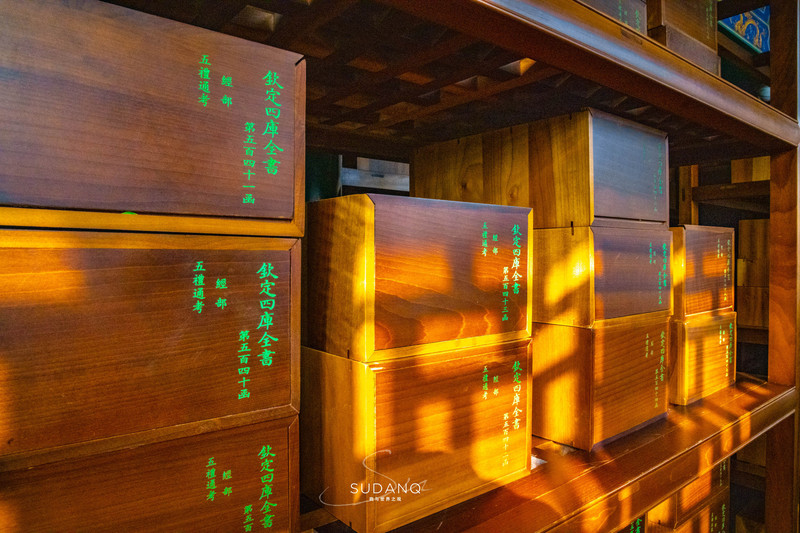
The biggest attraction inside is "Siku Quanshu", which was published by the Commercial Press in 2013. It is a copy of the original, original, and original version of "Siku Quanshu". On the first floor of Wenhui Pavilion, there is also a Cultural and Creative Center, a book bar and a coffee shop.

After visiting the core part of Wenhui Pavilion, you can go to the cafe.
Tickets: 0 yuan
Tour time: approximately 40 minutes

05 Canal Sanwan Scenic Area: Yangzhou's prosperity starts from the Grand Canal
Yangzhou was not only the beginning of China's Grand Canal, but also the prelude to Fujia Jiangnan. It has traveled through thousands of years, and its charm remains as usual. It is suitable for breeze, moonlight, light rain, and gluttonous.

To measure the length of Yangzhou's history, the Canal Three Bay Scenic Area is a yardstick that cannot be ignored. In 486 BC, King Fuchai of Wu dug the first shovel of soil in Hangou, and Yang Guang, Emperor Yang of the Sui Dynasty, dug the North-South Grand Canal on the basis of Hangou.

The waterway here is the main waterway for literati, literati, wealthy businessmen and eminent monks to enter Yangzhou. Yangzhou's civilization height and economic development have caused storms and storms in the long river of history.

Thousands of years later, the three bays of the canal are now a world cultural heritage and a national water conservancy scenic spot. Based on the scenery of the Three Canal Bay and surrounding wetlands, a large-scale urban park has been built according to local conditions.

The main attractions include Silhouette Bridge, Lingbo Bridge, Tingyuxuan, City Bookstore, etc. There are also large museums around.

06 Songjiacheng
Yangzhou in the Song Dynasty had the saying of "one place, three cities", namely Song Dacheng, Song Jiacheng, and Baoyou City.
Songjia City is between Baoyou City and Song Dacheng. It has a narrow rectangle with the south slightly east and the north slightly west. It has a history of nearly 800 years. Although it later experienced the influence of historical factors such as war, the geomorphological characteristics of the city are vaguely visible.

Today's Songjiacheng Archaeological Site Park was rebuilt on the original site. Now Songjia City has been developed into a sports and leisure park.

07 Special Experience: Yangzhou Back Rubbing Hall
Wrap your skin with water in the morning and wrap it with water at night. The life of Yangzhou people is extremely leisurely and comfortable from morning to night.
If you spend one day arranging your Yangzhou itinerary, you will undoubtedly get up early for morning tea, go to the garden after morning tea, eat Huaiyang cuisine at noon, and Citywalk in the afternoon. After eating another Huaiyang cuisine at night, you will soak in a bath and rub your back and pedicure.

Yangzhou Back Rubbing Hall is quite famous. Soak in the bathtub for 15-20 minutes, accompanied by roses, it is very comfortable. After taking a bath, you will start the journey of back rubbing. There are four sides and two sides. Two sides only rub the front and back, and four sides add two sides of the body.



But what makes me feel most comfortable is a pedicure. I have long heard of the power of Yangzhou's three swords. Now that I tried it, I felt really comfortable.
Previous Article:Traveling to the Four Seas (1769) Eleventh Self-Driving Tour in Jiangsu and Anhui--Changle Inn
Next Article:Traveling around the world (1680) Geyuan
